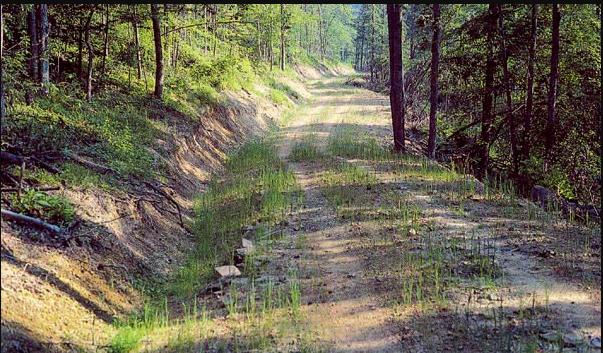Clemson field tours to show alternatives to using invasive species for erosion control
October 15, 2019While most born below the Mason-Dixon line are quite familiar with the notorious plant known as “the vine that ate the South,” fewer are aware of the cautionary tale kudzu represents: It was actually introduced into the southern U.S. as an erosion-control species.

Clemson’s research has found a large number of invasive plant species being recommended in best management practices manuals across the southeastern U.S. for soil stabilization purposes, a method that it is understood within the industry should not be practiced.
Image Credit: Clemson University
With that standing as an example of the potential consequences of introducing invasive species in forestry applications, Clemson University has announced a series of field tours to provide an overview of current best management practices in South Carolina and their importance to protect water quality.
“We’re trying to educate people on what species they should not be using for erosion control, what the alternatives could be and the best management practices topic in general,” said graduate student Megan Budnik, who is leading the series and co-advised on the project by Patrick Hiesl and Don Hagan, assistant professors in Clemson’s forestry and environmental conservation department.
Clemson’s research has found a large number of invasive plant species being recommended for soil stabilization in best management practices manuals across the southeastern U.S. This project aims to raise awareness of the negative impact of invasive plant species in forestry applications but also to show alternative non-invasive plant species and how they might perform in a forestry setting.
In keeping with its land-grant mission of bringing the fruits of its research to the people of South Carolina through outreach programs, Clemson Cooperative Extension is holding the field tours Monday, Oct. 21, at the Clemson Experimental Forest and Wednesday, Oct. 23, at Manchester State Forest and Sand Hills State Forest. More information and links for registration at the various sites are available here:
Monday, Oct. 21
- Clemson Experimental Forest Site 1
10 a.m.-noon
tinyurl.com/ClemsonSite1 - Clemson Experimental Forest Site 2
4-6 p.m.
tinyurl.com/ClemsonSite2
Wednesday Oct. 23
- Manchester State Forest
10 a.m.-noon
tinyurl.com/Manchester - Sand Hills State Forest
4-6 p.m.
tinyurl.com/SandHills
Budnik said many best management practices manuals have not been updated in more than three decades, and the goal of the field tours is to educate people on ways to stabilize soil without using invasive species, such as those in the manuals.
“That was our main concern, and invasive species weren’t on the radar as much as they are now, so there ended up being three different species that are currently recognized as invasive species put in that published recommended mix for erosion control,” Budnik said. “What we’re trying to do is something that should have been done a while back: quantify how well the current mixes are stabilizing soil and find an alternative mix that stabilizes the soil just as well — because we have to protect water quality — without introducing more invasive species into our forests in South Carolina.”
Many states have best management practices in place to help landowners, foresters, loggers and other forestry professionals to minimize impact on water quality.
“Within the profession, it is understood that we should not use invasive plant species, but landowners that may or may not have a working knowledge of invasive plant species may solely rely on printed information,” Hiesl said. “Our project highlights this but also shows alternatives to the currently recommend plant species that can do as good or even better than the invasive plant species mixes previously used. The key take-home message is that you do not need invasive plant species to stabilize soils as some non-invasive plant species can do an even better job in soil stabilization, all without sacrificing cost.”
The project is funded by the Natural Resources Conservation Service through a Conservation Innovation Grant and is being conducted in partnership with the Clemson Experimental Forest and South Carolina Forestry Commission.
The field days aim to show participants one of the four research sites and explain in detail what Clemson’s researchers have done and how the different plant species mixes that they seeded in have performed. The Forestry Commission will also have a best management practices forester on site for each field to give a brief overview of best practices and water quality.
Registration is required for the field tours, which are free for all attendees. Two hours of Category 1 Continuing Forestry Education credits available at a cost of $20. For information, contact Clemson Cooperative Extension Agent Ryan Bean at 803-840-6124 or [email protected].












